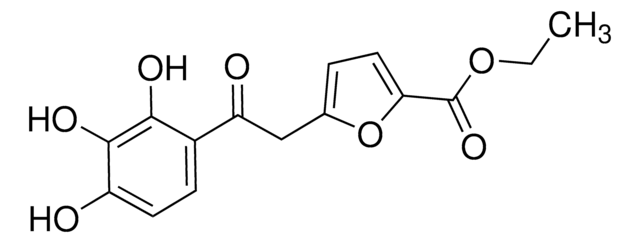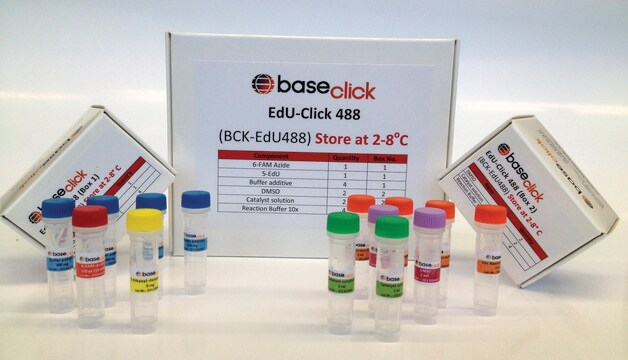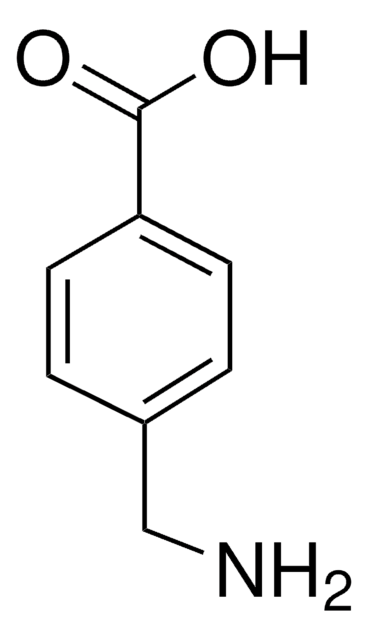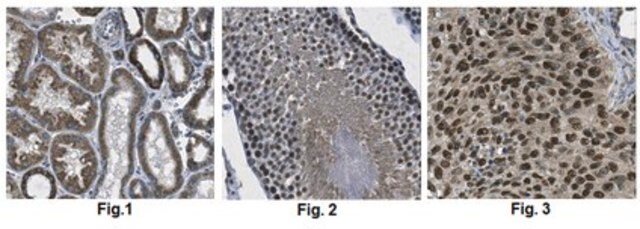05-1320-M
Anti-EED Antibody, clone AA19
ascites fluid, from mouse
Synonym(s):
WD protein associating with integrin cytoplasmic tails 1, embryonic ectoderm development
Sign Into View Organizational & Contract Pricing
Select a Size
All Photos(1)
Select a Size
Change View
About This Item
UNSPSC Code:
12352203
eCl@ss:
32160702
NACRES:
NA.41
Recommended Products
General description
Polycomb group proteins are important for maintaining transcriptional silencing. One conserved PcG complex, PRC2, is composed of several proteins including the histone methyltransferase EZH2, the WD-repeat protein EED (Embryonic ectoderm development), and the Zn-finger protein Suz12. Transcriptional repression mediated by EED involves histone deacetylation, while the EZH2 methylates histone H3 on lysine 27. EED protein is present in four isoforms. These EED isoforms selectively associate with distinct EZH2-containing complexes, resulting in differential targeting of their associated methyltransferase activity. These complexes play a role in Hox gene silencing, X-inactivation, germline development, stem cell pluripotency and cancer metastasis. EED is also known to bind H3K27me3 and can allosterically stimulate the methyltransferase activity of the PRC2 complex. (Ref.: Hojfeldt, JW. et al (2018) Nat. Struc. Mol. Biol. 25 (3); 225-232).
Specificity
Not tested in other species.
This antibody recognizes mouse EED, (~30-65 kDa).
Immunogen
Recombinant fusion protein of full length murine EED tagged with MBP.
Application
Anti-EED Antibody, clone AA19 is a mouse monoclonal antibody for detection of EED also known as WD protein associating with integrin cytoplasmic tails 1 ,embryonic ectoderm development & has been validated in WB.
Research Category
Epigenetics & Nuclear Function
Apoptosis & Cancer
Epigenetics & Nuclear Function
Apoptosis & Cancer
Research Sub Category
Chromatin Biology
Chromatin Biology
Quality
Routinely evaluated by Western Blot on A431cel lysatel.
Western Blot Analysis: 1:5,000 of this lot detected EED on 15 μg/mL of A431 cell lysate.
Western Blot Analysis: 1:5,000 of this lot detected EED on 15 μg/mL of A431 cell lysate.
Target description
Ranges from 30-65 kDa (5-6 isoforms of EED are detected).
Physical form
Protein G Purified
Purified immunoglobulin in 0.1 M Tris-Glycine (pH7.4) 150 mM NaCl with 0.05% sodium azide.
Storage and Stability
Stable for 1 year at 2-8°C from date of receipt.
For maximum recovery of product, centrifuge the vial prior to removing the cap. Avoid repeated freeze/thaw cycles, which may damage IgG and affect product performance.
For maximum recovery of product, centrifuge the vial prior to removing the cap. Avoid repeated freeze/thaw cycles, which may damage IgG and affect product performance.
Analysis Note
Control
A431 Cell Lysate
A431 Cell Lysate
Other Notes
Concentration: Please refer to the Certificate of Analysis for the lot-specific concentration.
Disclaimer
Unless otherwise stated in our catalog or other company documentation accompanying the product(s), our products are intended for research use only and are not to be used for any other purpose, which includes but is not limited to, unauthorized commercial uses, in vitro diagnostic uses, ex vivo or in vivo therapeutic uses or any type of consumption or application to humans or animals.
Not finding the right product?
Try our Product Selector Tool.
Storage Class
12 - Non Combustible Liquids
wgk_germany
WGK 1
flash_point_f
Not applicable
flash_point_c
Not applicable
Certificates of Analysis (COA)
Search for Certificates of Analysis (COA) by entering the products Lot/Batch Number. Lot and Batch Numbers can be found on a product’s label following the words ‘Lot’ or ‘Batch’.
Already Own This Product?
Find documentation for the products that you have recently purchased in the Document Library.
Polycomb group proteins in cell cycle progression and cancer.
Pasini, Diego, et al.
Cell Cycle, 3, 396-400 (2004)
The central role of EED in the orchestration of polycomb group complexes.
Cao, Q; Wang, X; Zhao, M; Yang, R; Malik, R; Qiao, Y; Poliakov, A; Yocum, AK; Li, Y; Chen et al.
Nature Communications null
Adrian P Bracken et al.
Genes & development, 20(9), 1123-1136 (2006-04-19)
The Polycomb group (PcG) proteins form chromatin-modifying complexes that are essential for embryonic development and stem cell renewal and are commonly deregulated in cancer. Here, we identify their target genes using genome-wide location analysis in human embryonic fibroblasts. We find
James P Reddington et al.
Genome biology, 14(3), R25-R25 (2013-03-28)
DNA methylation and the Polycomb repression system are epigenetic mechanisms that play important roles in maintaining transcriptional repression. Recent evidence suggests that DNA methylation can attenuate the binding of Polycomb protein components to chromatin and thus plays a role in
Diego Pasini et al.
Molecular and cellular biology, 27(10), 3769-3779 (2007-03-07)
Polycomb group (PcG) proteins form multiprotein complexes, called Polycomb repressive complexes (PRCs). PRC2 contains the PcG proteins EZH2, SUZ12, and EED and represses transcription through methylation of lysine (K) 27 of histone H3 (H3). Suz12 is essential for PRC2 activity
Our team of scientists has experience in all areas of research including Life Science, Material Science, Chemical Synthesis, Chromatography, Analytical and many others.
Contact Technical Service




![Dichlorotriphenylphosphine[bis(2-(ethylthio)ethyl)amine]ruthenium(II) 97%](/deepweb/assets/sigmaaldrich/product/structures/355/871/c9ac8b63-9a77-4c66-b545-cb7c41673aa4/640/c9ac8b63-9a77-4c66-b545-cb7c41673aa4.png)



